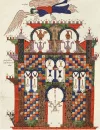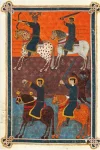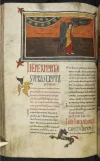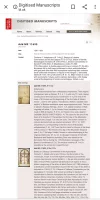- Time of past OR future Camino
- Various 2014-19
Via Monastica 2022
Primitivo 2024
This article wraps a bunch of interests into one fascinating package: the history of Spain during the Islamic conquista, the role of large monasteries in the north in maintaining and dispersing Christian texts, and the art of illustrated manuscripts.
It describes (and beautifully illustrates) the richly illuminated manuscripts of a commentary on the Book of Revelation that came from Santo Domingo de Silos, just South of Burgos, on the Lana. Also mentioned in the article is the Abbey of Santo Toribio de Liébana, on the Camino Liébanego, where the comnentary was originally written.
When we walk these caminos, we can see the buildings that have come down to us (intensively remodelled) from more than 1000 years ago - but this piece gives us a vision of what people were actually doing in thise buildings, how they viewed the world, and what they valued.

 www.nationalgeographic.com
www.nationalgeographic.com
It describes (and beautifully illustrates) the richly illuminated manuscripts of a commentary on the Book of Revelation that came from Santo Domingo de Silos, just South of Burgos, on the Lana. Also mentioned in the article is the Abbey of Santo Toribio de Liébana, on the Camino Liébanego, where the comnentary was originally written.
When we walk these caminos, we can see the buildings that have come down to us (intensively remodelled) from more than 1000 years ago - but this piece gives us a vision of what people were actually doing in thise buildings, how they viewed the world, and what they valued.

Terrifying visions of the Apocalypse revealed the fears of medieval Spain
Written as Islam swept across the Iberian Peninsula, the Silos Apocalypse, a 10th-century illuminated manuscript, depicts biblical visions of the end of the world.





















